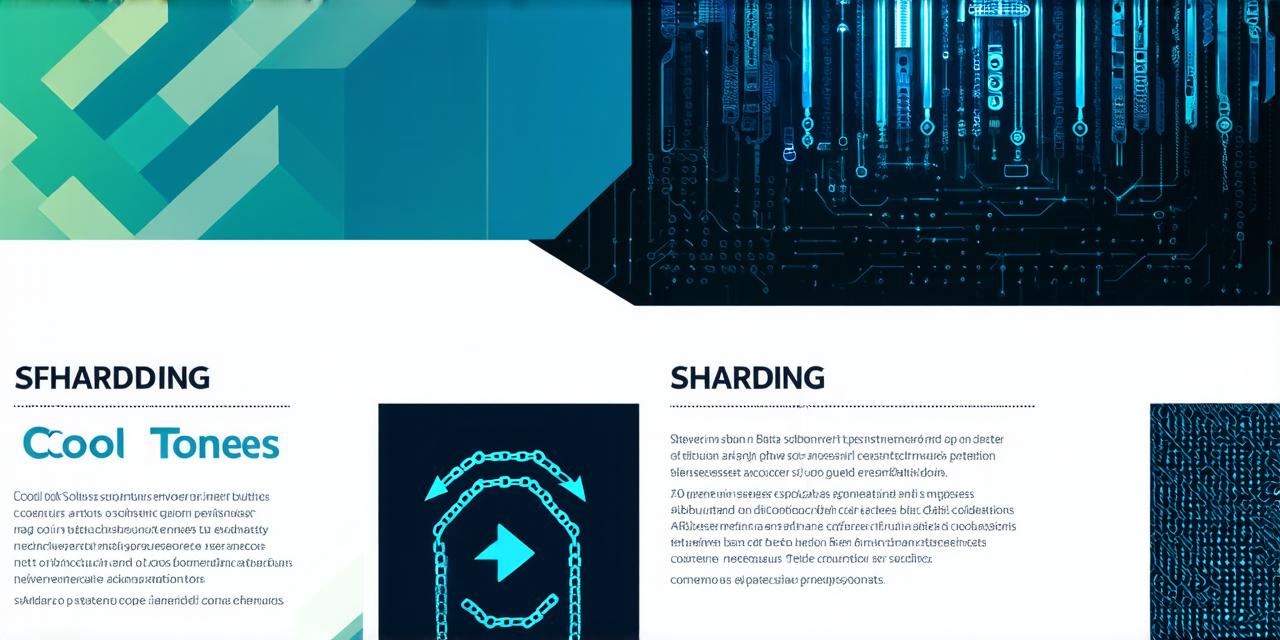
Blockchain technology has been gaining widespread attention and adoption across industries due to its ability to provide secure, decentralized, and transparent data storage and sharing. However, as the number of transactions on a blockchain network increases, it can become slow, expensive, and inefficient.
This is where sharding comes into play.
What is Sharding in Blockchain?
Sharding is a technique used to horizontally partition data across multiple nodes or computers. In the context of blockchain, sharding allows for the distributed storage of data across multiple nodes or computers, which can significantly improve network performance and scalability.
By breaking down the blockchain into smaller, more manageable parts, we can reduce the load on each node and increase the overall throughput of the network.
Sharding in blockchain can be implemented at different levels, including the application layer, consensus mechanism layer, and storage layer. Each level has its own set of challenges and trade-offs, but they all aim to improve the performance and scalability of the blockchain.
How does Sharding work in Blockchain?
The process of sharding in blockchain involves dividing the network into smaller parts called shards. Each shard contains a subset of the data on the blockchain, and each shard is managed by a separate node or computer.
These nodes communicate with each other to maintain the integrity of the data across all shards.
There are several ways to implement sharding in blockchain, including:
- Range-based sharding: In this approach, the data on the blockchain is divided based on a range of values, such as timestamps or transaction IDs. Each node is responsible for a specific range of values, and they communicate with each other to maintain consistency across all shards.
- Hash-based sharding: In this approach, the data on the blockchain is divided based on a hash function, which maps each piece of data to a specific shard. Each node is responsible for a specific subset of the hash space, and they communicate with each other to maintain consistency across all shards.
- Directed acyclic graph (DAG) sharding: In this approach, the data on the blockchain is divided based on a DAG, which represents the order in which transactions are processed. Each node is responsible for a specific subset of the DAG, and they communicate with each other to maintain consistency across all shards.
Benefits of Sharding in Blockchain
Sharding in blockchain offers several benefits, including:
- Improved performance: By distributing data across multiple nodes, we can reduce the load on each node and increase the overall throughput of the network. This can significantly improve the speed at which transactions are processed and confirmed.
- Increased scalability: Sharding allows for the addition of new nodes to the network without affecting the performance of existing nodes. This means that the network can scale horizontally as needed, without being limited by the capabilities of a single node or computer.
- Enhanced security: By distributing data across multiple nodes, we can reduce the risk of a single point of failure or attack. If one node is compromised, the other nodes can continue to operate and maintain the integrity of the data.
- Reduced costs: Sharding can help to reduce the cost of running a blockchain network by allowing for the use of less expensive hardware or cloud resources.
Drawbacks of Sharding in Blockchain
Sharding in blockchain also has some drawbacks, including:
- Increased complexity: Implementing sharding in blockchain requires a significant amount of technical expertise and can be complex to set up and maintain.
